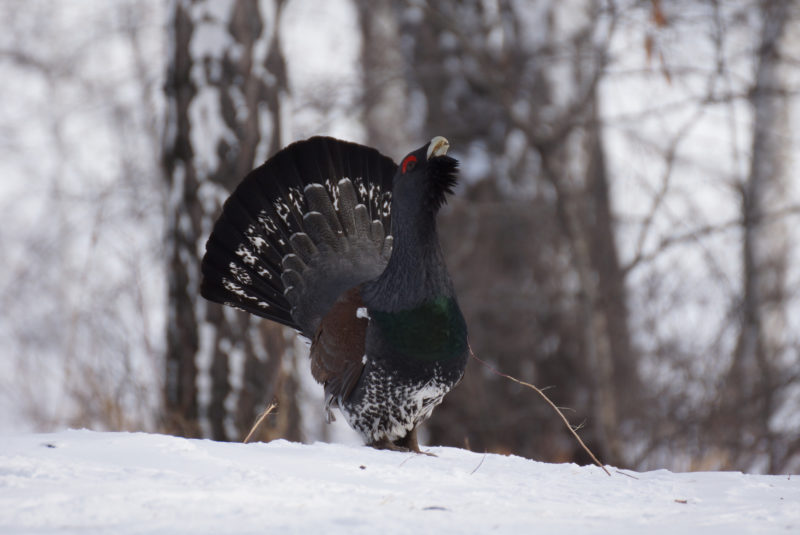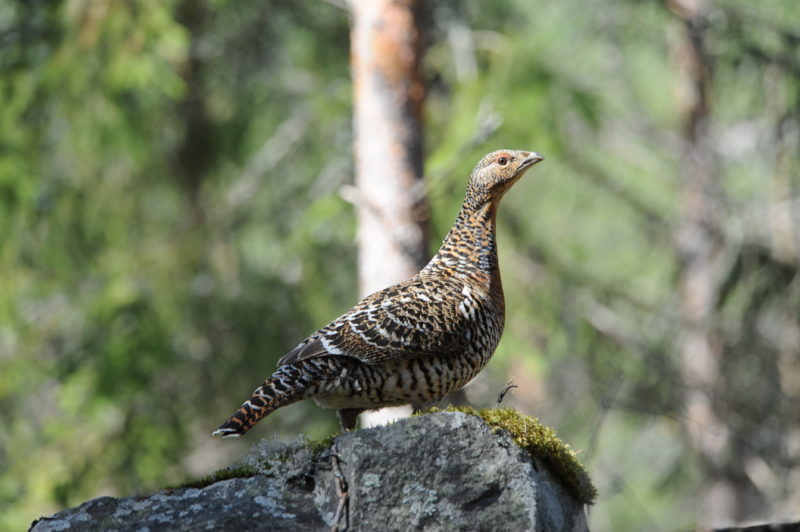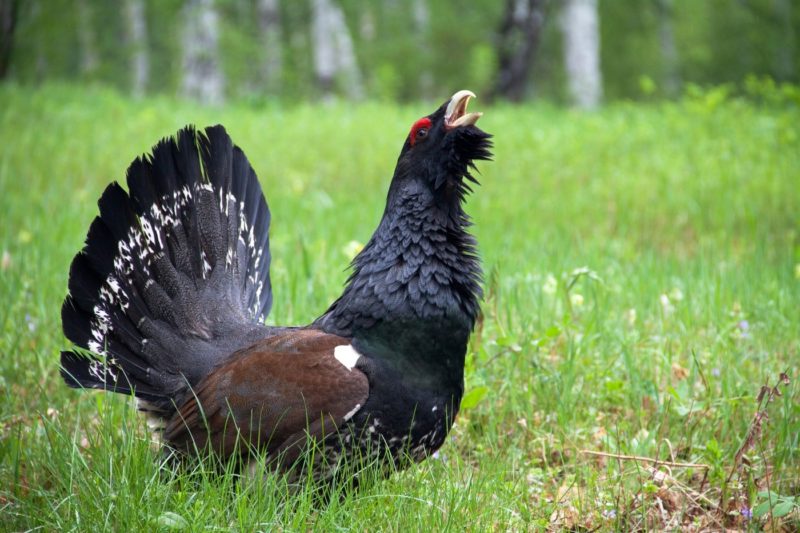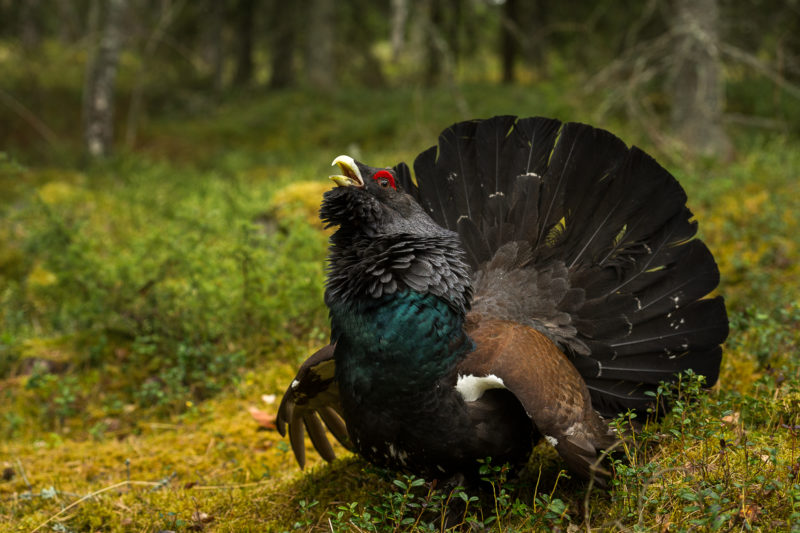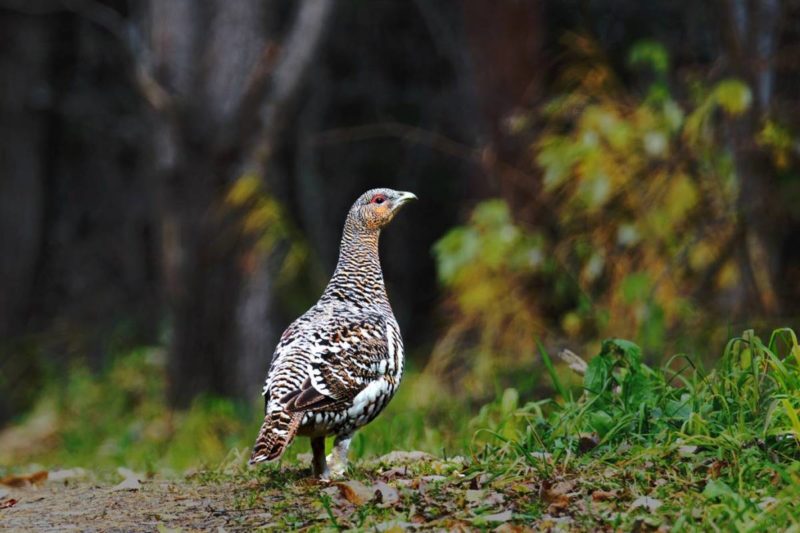The capercaillie (Tetrao Linnaeus) on the territory of Russia used to be found everywhere. For example, Muscovites could even see him in Izmailovsky Park, where the birds lived without being too afraid of people, and this reminded them of pigeons. Today, considerable efforts must be made to see the capercaillie in its natural habitat. But the bird is so beautiful, and its behavior is so interesting that the effort is worth it.
Material Content:
General characteristics of capercaillie
A large individual belongs to the pheasant family, the black grouse subfamily. It will not be difficult to distinguish capercaillie by gender. Males are much larger, and their plumage is brighter than that of females.
So, the weight of males usually ranges from 4-6 kg. This is a real record among birds living in the forests of central Russia. Females rarely weigh more than 2 kg. That is, they even look 2-3 times smaller in appearance than males.
In males, a bunch of feathers resembling a beard can be seen on the neck. Skin lesions above the eyes resemble red eyebrows. The plumage is dark, but by no means homogeneous. It can distinguish black and brown, gray and emerald colors. Capercaillie males are also called "cocks."
Females are not only smaller, but their plumage is much more modest. It combines brown and rusty red tones. In general, birds are motley. But on the stomach, various shades add up in such a way that they resemble stripes.
White spots can be observed in the tail region of the capercaillie.
Initially, these birds were divided into 12 species, then they began to differentiate into 2 main ones.
The first is an ordinary capercaillie. The bird has a hooked beak, the weight of the capercaillie reaches 6.5 kg. The subtypes of this category include black-bellied, white-bellied and dark taiga capercaillie.The first subtype is found in the European part of Russia, the second in the Urals and Western Siberia, the third in the north of the country.
The second type is the capercaillie. These birds live in the east of Russia - from Baikal to Sakhalin. Their beak is straight, and the maximum weight reaches 4 kg.
Habitats and lifestyle
Capercaillie lives mainly in coniferous forests, less often - in mixed and deciduous. And also this bird can be seen in the marshy area, because there are many berries that are very attractive for this pheasant family.
Unfortunately, in Russia there is an active deforestation, so the capercaillie area is narrowing. Birds are found in the Ryazan region, on the Volga - north of Buzuluk, in the Southern Urals, in Western Siberia, in Altai.
You can meet a bird in Europe. First of all, these are the Alps and Pyrenees, the Rhodope Mountains and the Scandinavian Peninsula, forests in the vicinity of Kiev and Chernigov.
Capercaillie prefer a sedentary lifestyle, avoid long flights. Indeed, long distances are not easy for these birds. They rarely rise high, often fly ten meters from the ground, while flapping their wings noisily. They prefer to walk during the day and hide at night, hiding in the dense foliage of trees or shrubs.
The birds have excellent eyesight and hearing, which warn of the approach of danger.
Usually birds live in small flocks. They hibernate in their usual habitats, in the case of severe frosts they burrow into the snow, getting out 1-2 times a day to get food. At the same time, capercaillie is at risk: if the cold weather changes the thaw, the snow can become icy crust and the bird will be trapped.
Females are silent, but males sing in the spring. They make quite peculiar sounds that can be divided into 3 parts. Double clicks are replaced by trill-grinding (chirping). The grouse song continuously lasts about 10 seconds, and in the end he temporarily loses his hearing.
Large birds rarely get out into the open, as if they realize that there they will be too noticeable and vulnerable. Although, once in the sand, they use it as hygienic procedures - they "bathe" to maintain the cleanliness of the feathers.
Diet
In the summer it is not difficult to get food for the wood grouse.
What attracts him:
- insects (ants, etc.);
- berries;
- young green shoots of plants;
- some flowers and herbs.
In winter, the diet becomes rougher. Buds of pine and spruce, pine needles, fir, surviving berries of mountain ash and juniper. During the day, the bird eats up to 0.5 kg of food. A smaller female, a larger male. To make rough food easier to digest, grouse swallows small pebbles that help them grind food.
Due to the fact that the grouse meat is very tasty, and the birds themselves are unpretentious in food, a person is interested in keeping them in captivity. In the mating season, birds are caught by nets and placed in aviaries. Together they hold 5-6 females and 3-4 roosters. Special vests are put on the wings so that the birds do not injure each other.
In captivity, capercaillie is fed with leaves of aspen, larch needles, oats, corn, pine nuts.
Capercaillie breeding
The place where capercaillie talk in spring is called a current. Males can settle down both on the earth, and on tree branches. They move as if dancing, clattering feathers, making sounds that look like crackling.
It is with this period that the name obtained by the birds is connected. In the inner ear, they have a special fold containing many blood vessels. During the current period, when wood grouse perform their arias, so much blood rushes to their heads that the folds begin to swell and the males lose their hearing. At this time, as they say, you can take them with your bare hands.
But in the mating season feathered and fiercely fight. If the rivals are too close to each other (the usual distance is more than 100 m), they can begin to fight to the blood.
This type of bird belongs to polygamous: the male can mate with 2-3 grouse.In the midst of spring, when foliage already appears, the female makes a nest in the thickets of grass, in the bush. The diameter of such a dwelling reaches 25 cm. The expectant mother is able to lay 4 to 14 eggs and hatch them for about a month.
Chicks quickly become independent, immediately begin to eat insects, and about a week after their birth they are already trying to take off. A month later, they finally leave the nest.
Males begin to breed at the age of 2 years, females become caring mothers by 3 years.
Captive breeding is problematic, requires special knowledge.
Life span
Not all eggs hatch from all eggs. Most of them - up to 80% - die. This is due to low air temperatures, and predators who like to enjoy such delicacies.
About half of the small grouse perishes for the same reasons.
A long spring is especially dangerous for them. Suffering from the cold, the chicks cling to their mother, do not leave to get their own food, and die of hunger.
Adult birds in their native forests live about 9-12 years.
Enemies in nature
The main enemies of grouse in the wild are wolves, foxes, bears. Ermines, martens, and other small predators ruin their nests and eat eggs. Harmful to the homes of birds and wild boars.
And they can also make capercaillie their prey hawks and kites, raccoon dogs.
A special danger awaits birds during the current period. When males lose their hearing, they are easy prey for predators.
Bird hunting
Capercaillie is an attractive hunting trophy for humans. Their meat is very tasty. In the 17th and 19th centuries, great attention was paid to the hunting of wood grouse.
Fans of this type of game rush to its places of residence in the permitted period, which begins from the end of August. But you need to find out: in different areas there are shifts in terms.
In autumn they hunt for broods of grouse. At this time, the dog becomes a helper (husky, pointing dog or spaniel), which raises birds from the branches, while the person shoots at moving targets.
In winter, the capercaillie will have to wait: the bird eats what it finds under the trees. The main thing is to imperceptibly approach production.
For hunting, it is recommended to use shotguns with a smooth barrel of 12 or 16 caliber. The most convenient in practice are multi-shot rifles with an optical sight.
Interesting Facts
People have observed the behavior of grouse for many years. I managed to notice a lot of interesting facts.
In the stomach of birds can be up to 2 thousand small pebbles that help grind food.
Adults prefer shoots, buds and berries, while mother chicks are fed protein food - insects.
Males do not care about offspring. After the mating season, they, like true "gentlemen", leave their girlfriends and take refuge in a remote place in the forest, at this time they molt.
A young female may lose the nest, in which case the chicks will inevitably die.
Small flocks of capercaillie "lead a common economy." Each bird has its own tree "fixed". If one of the members of the community dies, relatives do not occupy its trunk.
During the flight, birds more often flap their wings than inhale the air. They do not choke at this time only because air bags, of which as many as five pieces, are attached to the lungs.
Capercaillie can interbreed with black grouse. The chicks resulting from such an alliance are called “drafts”.
Back in the middle of the XIX century, the first study was published on the maintenance of capercaillie in captivity. Pets A. Khvatov hatched from eggs that he collected in the forest. Lived birds in the barn, were completely tame. The males began to mate in the spring, and the wood grouse laid eggs and hatched the chicks.
In the middle of the 20th century, similar studies were carried out in reserves, where the capercaillie eggs were placed under hens. It was concluded that capercaillie is very suitable for domestication.
Birds are susceptible to a number of diseases, parasites are especially common in them.And also these individuals are so heavy in flight that they often die, colliding with power lines.
Here is such an interesting bird - grouse. Those who meet this interesting bird in the forest should not miss the opportunity and watch the amazing creation of nature.


